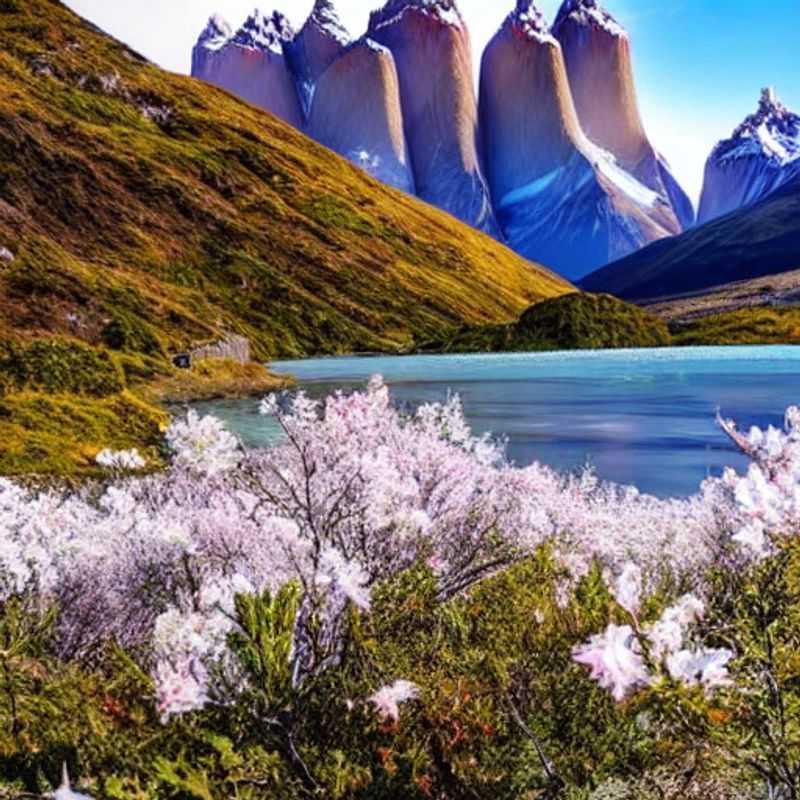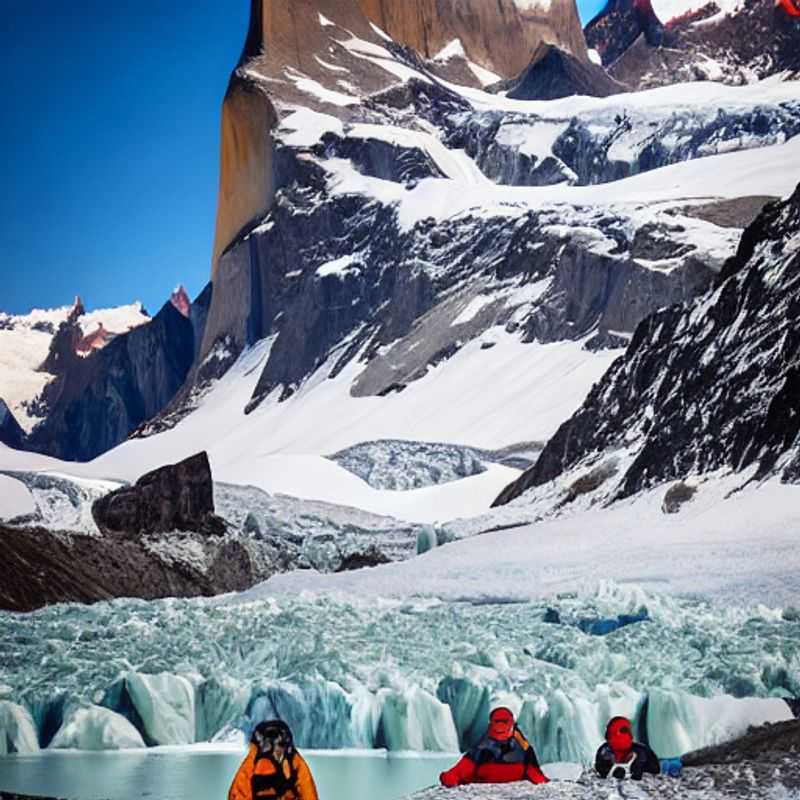Torres del Paine W-Trek: Top 5 Backpacking Spots for an Epic Chilean Summer Holiday

W-Trek Safety: Essential Tips for Backpacking Torres del Paine in 2026
Embarking on the W-Trek in Torres del Paine, Chile, in 2026 promises an unforgettable adventure, but thorough preparation is paramount for safety. This guide outlines essential tips to ensure your journey is as secure as it is spectacular. Always check the official CONAF website for the latest park regulations and trail conditions before your departure, as these can change seasonally and due to weather events.
Packing smart is crucial. Layering is key; bring waterproof and windproof outer shells, warm fleece or down mid-layers, and moisture-wicking base layers. Sturdy, broken-in hiking boots are non-negotiable to prevent blisters and provide ankle support on uneven terrain. Don't forget essentials like a reliable headlamp with extra batteries, a first-aid kit with personal medications, and plenty of sunscreen and lip balm, as the Patagonian sun can be intense even on cloudy days.
Navigation and communication are vital. While trails are generally well-marked, carrying a detailed map and compass, and knowing how to use them, is a wise backup. Consider a personal locator beacon (PLB) or satellite messenger for emergencies, as mobile phone service is extremely limited. Inform someone of your itinerary and expected return date.
Hydration and nutrition are fundamental to maintaining energy and preventing altitude sickness. Carry a reusable water bottle or hydration reservoir and utilize designated water sources, but always treat your water – either by boiling, filtering, or using purification tablets. Pack calorie-dense, non-perishable food items, and carry more than you think you'll need.
Respecting the environment and wildlife is also a safety measure. Stay on designated trails to avoid damaging fragile ecosystems and to prevent getting lost. Maintain a safe distance from wildlife, and never feed animals. Be aware of the unpredictable Patagonian weather; conditions can change rapidly, so be prepared for sun, rain, wind, and even snow, regardless of the season.
Finally, listen to your body and don't push your limits. If you're feeling unwell or overly fatigued, take breaks or consider adjusting your plans. Traveling with a buddy or joining a guided group can also enhance safety. By adhering to these tips, your 2026 W-Trek will be a safe and awe-inspiring experience.

You may also like
Torres del Paine W-Trek in Spring: Weather & Hiking Tips
Is the W-Trek in Torres del Paine Good for a Summer Holiday? A Weather Reality Check
Spring vs. Summer in Torres del Paine: Choosing the Best Time for the W-Trek
Beat the Crowds: Spring Hiking in Torres del Paine's W-Trek
Torres del Paine W-Trek in Spring: Packing List & Weather Essentials
Budget-Friendly Spring Hiking in Torres del Paine: Tips & Tricks
Exploring Torres del Paine's Hidden Gems: Beyond the W-Trek (Spring Edition)
Understanding Torres del Paine's Microclimates: Spring Weather Patterns
W-Trek in Spring: Avoiding Tourist Traps & Finding Authentic Experiences
Spring Hiking in Torres del Paine: A Digital Nomad's Guide to Efficient Exploration
Hey fellow adventurers! Planning a W-Trek in Torres del Paine during the shoulder season, between winter and spring (say, September to October) offers a unique blend of fewer crowds and stunning scenery. Expect unpredictable weather; pack layers, including waterproof and windproof outerwear, fleece mid-layers, and quick-drying base layers. Spring in Patagonia can be delightfully sunny, but also bring sudden rain, strong winds, and even some lingering snow at higher altitudes. Be prepared for anything!
The landscape itself is breathtaking. Imagine vibrant green grasslands contrasting with snow-capped peaks, turquoise lakes reflecting the mountains, and the iconic granite towers piercing the sky. It’s truly a photographer’s paradise! As for the local culture, you'll encounter a blend of Chilean and indigenous traditions. You'll find hearty Patagonian dishes like cordero al palo (lamb cooked on a spit) are a must-try. Expect to encounter friendly and helpful locals; many are proud of their region and eager to share their knowledge. While English is spoken in tourist areas, learning a few basic Spanish phrases will enhance your interactions significantly.
Music and soundscape will vary throughout the trek. In villages, you might hear traditional folk music, perhaps a mix of Chilean and Mapuche influences. Nature itself creates an amazing soundtrack: the rushing wind across the pampas, the calls of birds, and the quiet crunch of your boots on the trail. Patagonian architecture tends to be practical and functional, often reflecting the region's harsh climate. You'll see sturdy wooden structures, some with bright colours, designed to withstand wind and rain.
As for cost, let's break it down for a group of four: Entrance fees to Torres del Paine National Park are approximately $30 USD per person. Guided tours can range from $1000-$2000 USD per person for the entire W-Trek, which includes accommodation and meals. If you choose to self-guide, you'll need to budget for camping fees (around $15-20 USD per person per night), food supplies ($50-75 USD per person for the entire trek, depending on your preferences), and transportation to and from the park (busses from Puerto Natales range from $20-$40 USD per person, one way). Meals throughout the trek will vary depending on your choices; if you opt for camping, factor in cost of food for all meals. Assume a total food and drink budget of $100 - $150 per person throughout the entire trek. Remember, these are estimates, and costs can vary depending on the season and your choices.
Considering all aspects, the total estimated cost for a four-person group on a self-guided W-Trek might be around $3000 - $4500 USD in total, excluding flights. A guided tour will significantly increase this cost, but it eliminates the logistical hurdles of planning and provisioning your own trek. Remember, you can economize by opting for simpler meals, camping instead of using refugios (mountain huts), and utilizing public transportation. Enjoy the journey!
,
You may also like
W-Trek Torres del Paine 2026: Must-Knows Before You Go
Embarking on the W-Trek in Torres del Paine, Chile, is an unforgettable adventure, and planning for 2026 requires foresight. Understanding the park's booking system is paramount, as reservations for campsites and refugios fill up months, even a year, in advance, especially during peak season. Be prepared for potentially challenging and rapidly changing weather conditions; packing layers and waterproof gear is non-negotiable. Familiarize yourself with the Leave No Trace principles to preserve the pristine environment of this South American gem. Physical fitness is crucial; the trek involves significant daily mileage and elevation changes. Essential gear includes sturdy hiking boots, a reliable backpack, and trekking poles. Also, be aware of the transportation options to and from the park, which often involve buses and ferries and require pre-booking.